Gardening enthusiasts often seek beautiful plants that provide dual purposes in their outdoor spaces.
Many are particularly interested in finding plants that not only attract butterflies but also repel bothersome mosquitoes.
Choosing the right plants can enhance your garden’s beauty while keeping pests at bay.
Imagine enjoying your garden’s vibrant blooms without the constant annoyance of mosquitoes.
Integrating specific plants into your landscape can achieve this perfect balance, creating an inviting environment for butterflies and an unwelcoming one for mosquitoes.
#1 – Lavender
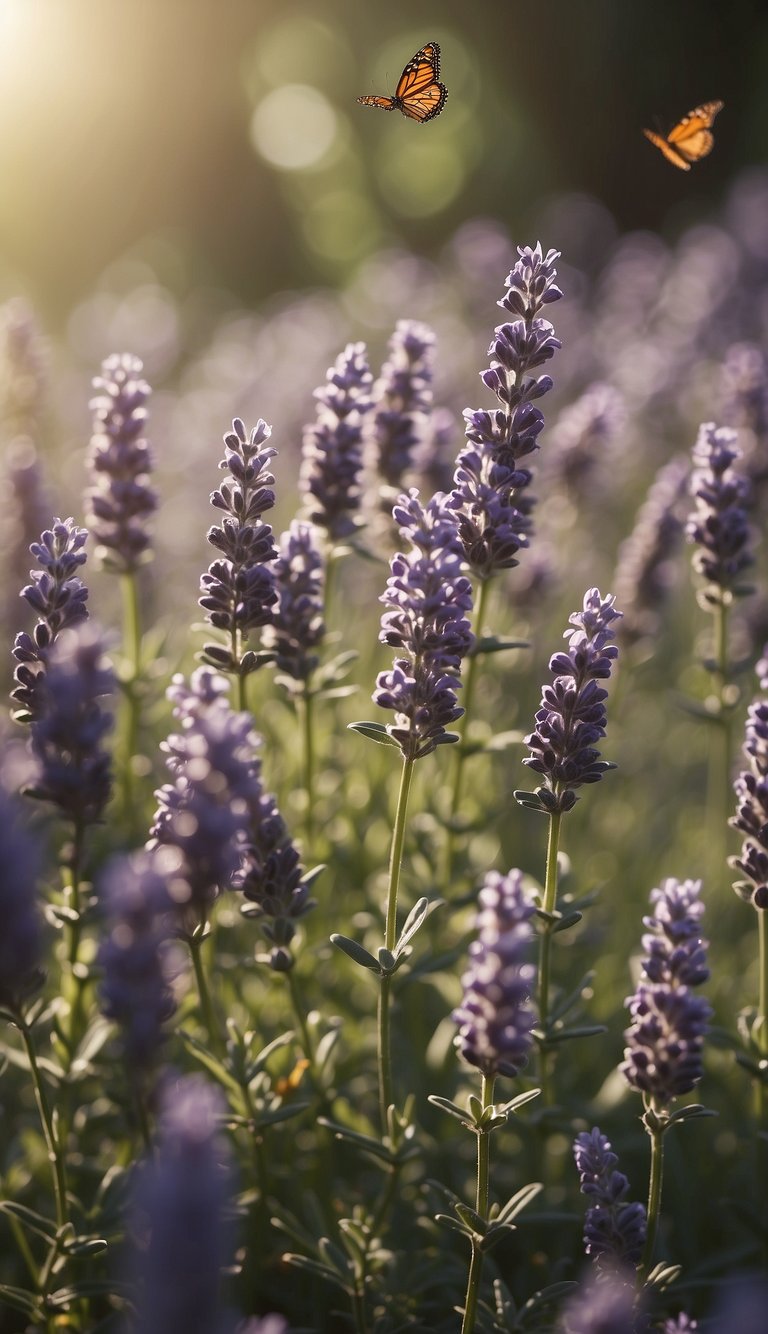

Lavender is a popular plant known for its lovely purple flowers and soothing scent. It is often used in gardens to keep mosquitoes away.
The smell of lavender is not liked by mosquitoes, making it a natural repellent.
On the other hand, butterflies are drawn to the colorful blooms of lavender. They love the nectar and often visit these flowers, making your garden lively.
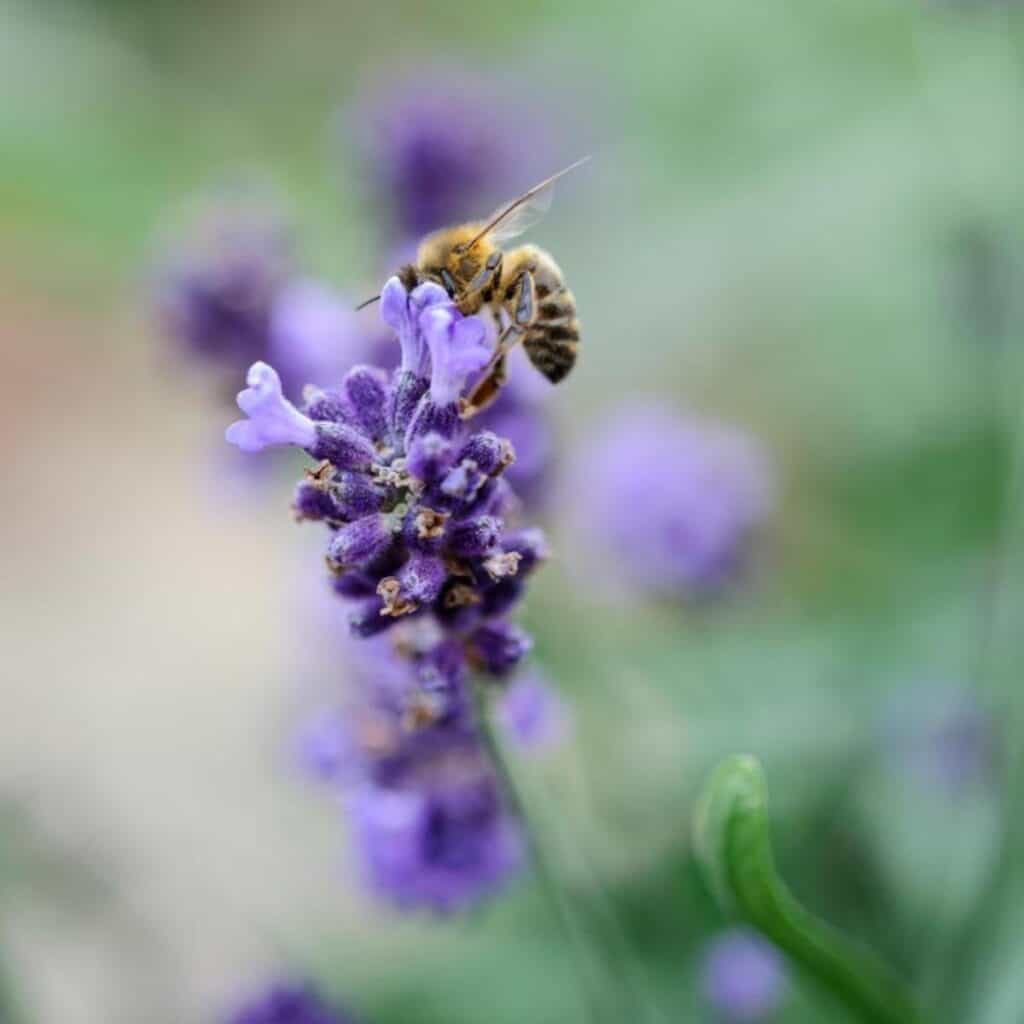

Lavender plants are easy to grow. They do well in sunny spots and can tolerate dry conditions. This makes them ideal for most garden settings.
Adding lavender to a garden not only helps to repel mosquitoes but also attracts butterflies. The dual benefit makes it a favorite among gardeners.
#2 – Bee Balm
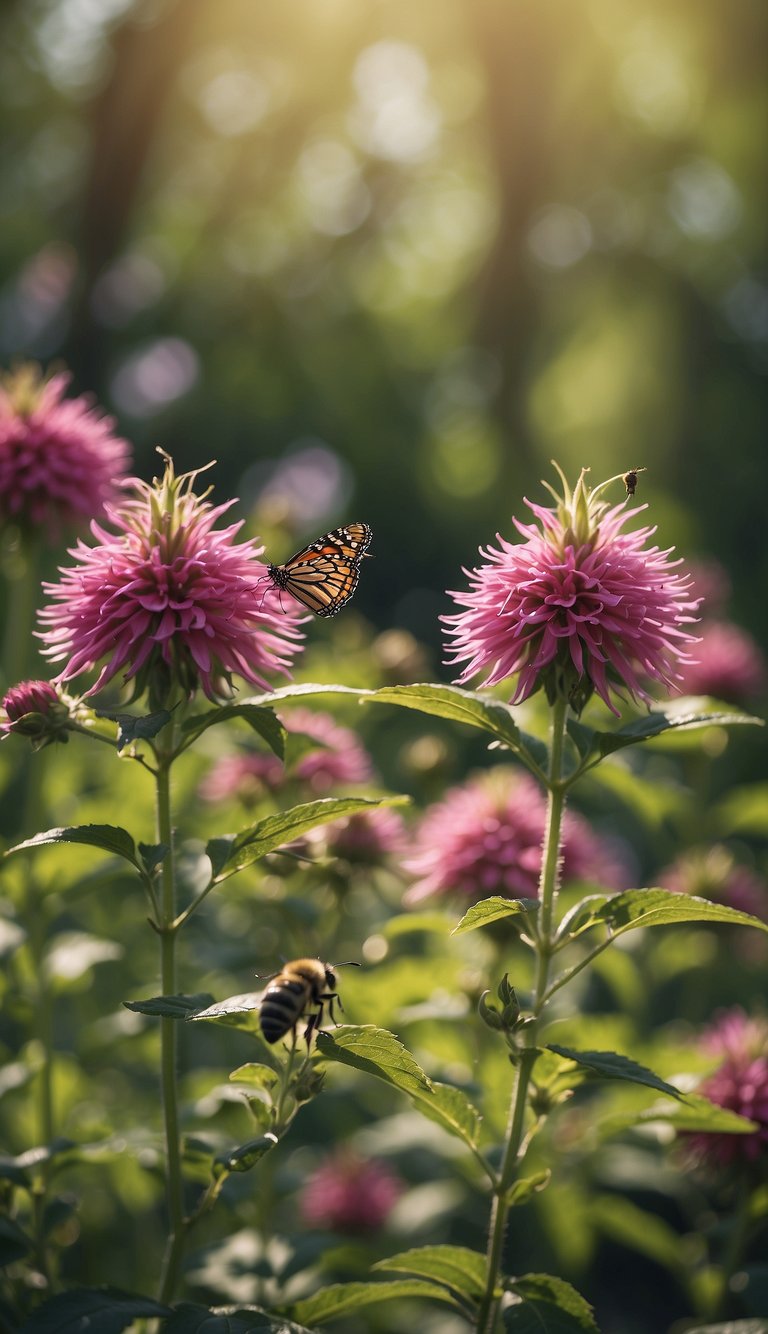

Bee Balm, also known as Monarda, is a vibrant flowering plant that adds color to any garden. It is known for its ability to repel mosquitoes naturally.
The plant’s fragrant leaves contain citronella oil, which mosquitoes find unpleasant.
Bee Balm is also a favorite among butterflies, bees, and hummingbirds. Its bright, tubular flowers provide a nectar source for these pollinators.
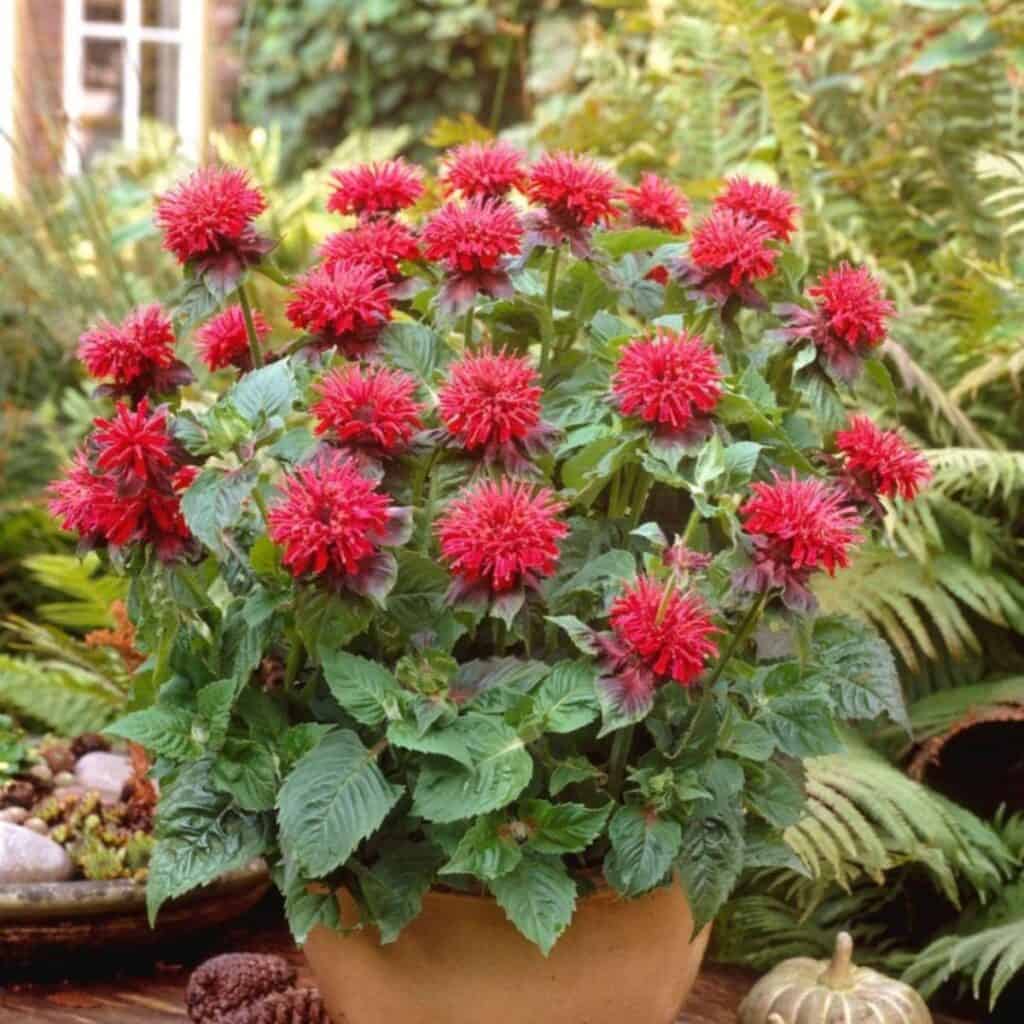

The plant can grow in various conditions but prefers sunny spots with well-drained soil. Bee Balm spreads quickly and can be a great addition to a garden if space permits.
It also comes in various colors, from pink to red and purple, making it a versatile choice for gardeners.
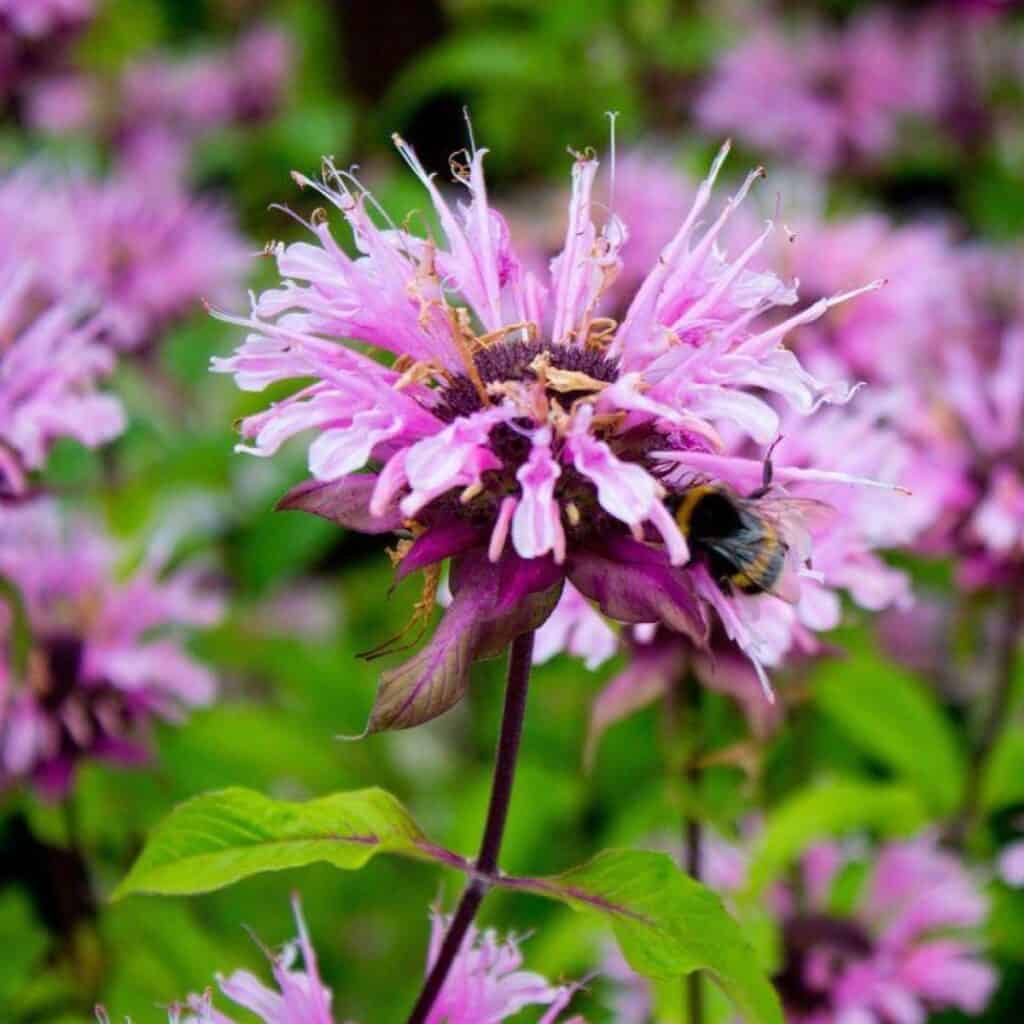

Gardeners can crush a few leaves to release the scented oils to enhance its mosquito-repelling effect. This makes it an excellent, natural option for a bug-free backyard.
#3 – Lantana
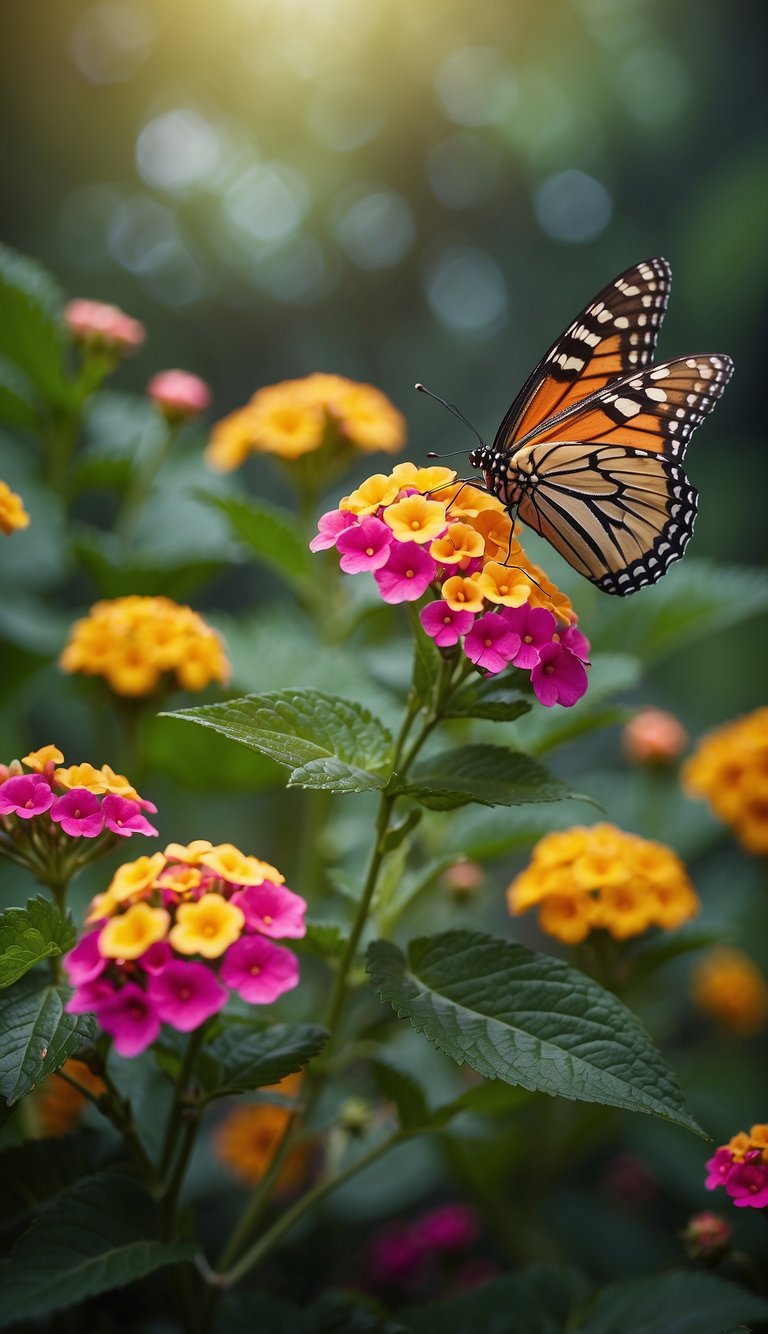

Lantana, is popular for its colorful flowers. The flowers come in shades of pink, orange, yellow, and purple.
This plant is known to repel mosquitoes. The scent of lantana keeps these pests away, making it a great choice for gardens.
Apart from repelling mosquitoes, lantana attracts pollinators. Butterflies and hummingbirds are drawn to its vibrant blooms.
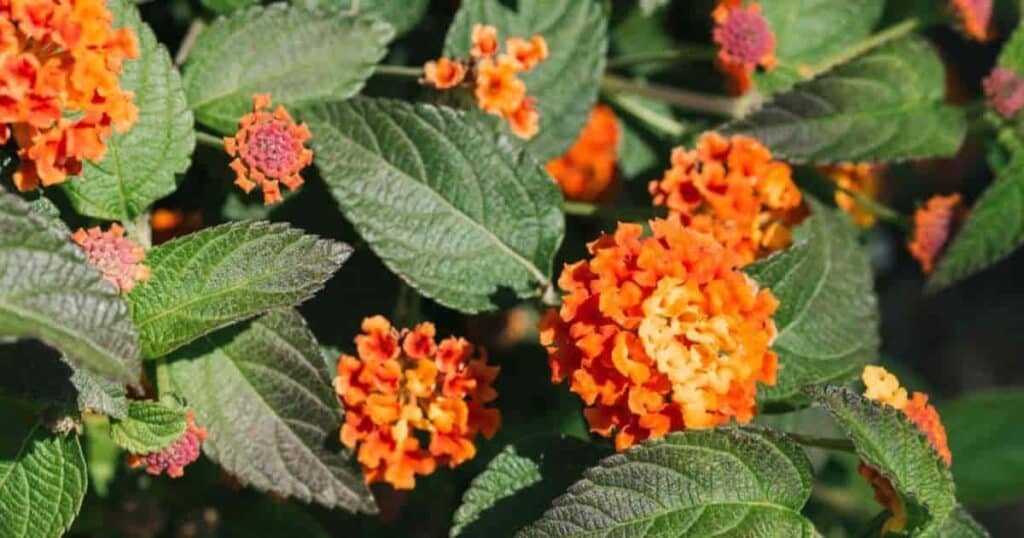

Lantana can thrive in sunny locations and does well in containers. It also requires little water, making it drought-tolerant.
One thing to note is that if ingested, lantana can be toxic to pets and humans. Gardeners should plant it with caution.
#4 – Marigold
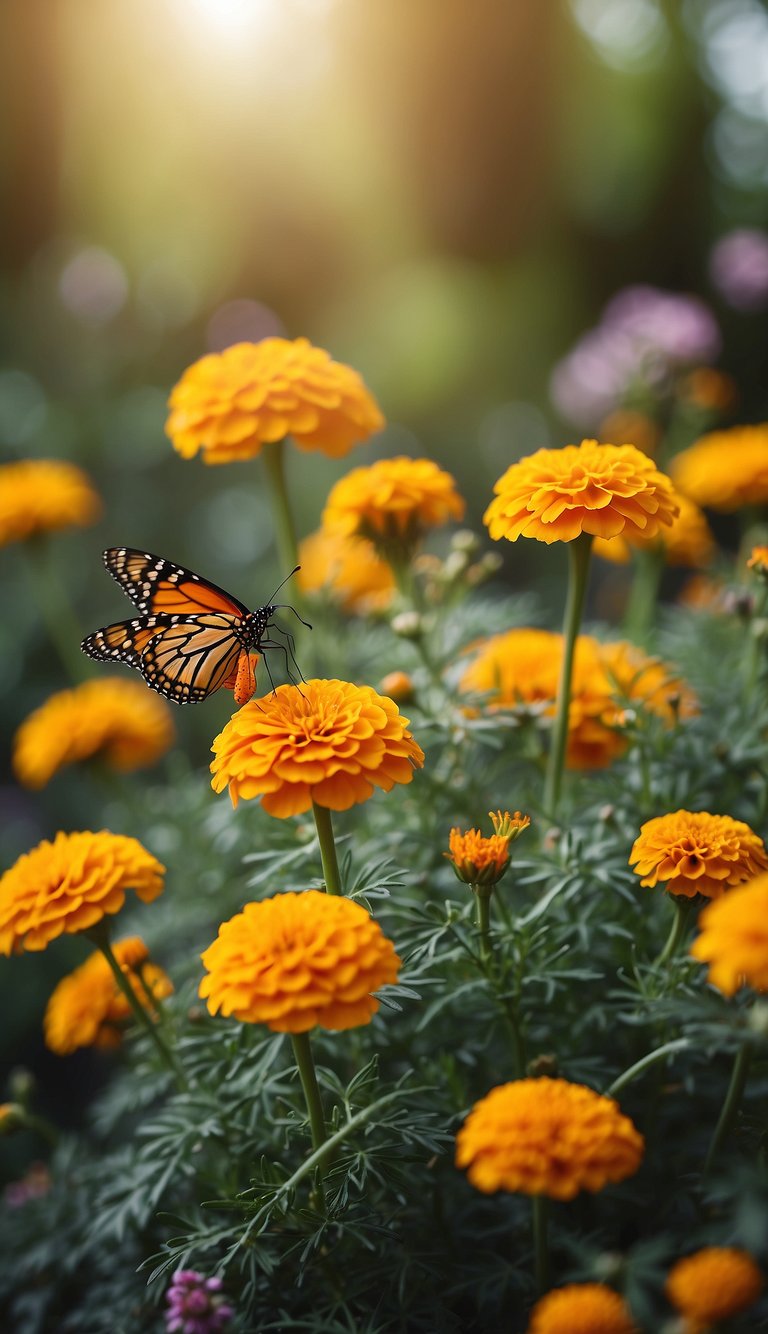

Marigolds are vibrant flowers that add beauty to any garden and help repel mosquitoes. Their strong scent is known to be unpleasant to these pests, making marigolds an effective natural mosquito repellent.
These flowers are easy to grow and care for. They thrive in full sun and well-draining soil. Regular watering keeps them healthy and blooming.
Marigolds can attract beneficial pollinators such as butterflies and bees. This makes them a great addition to gardens looking to balance pest control with attracting helpful insects.


Their bright colors come in various shades of yellow, orange, and red. Including marigolds in your garden can create a vivid, attractive scene while helping to keep mosquitoes at bay.
Plant marigolds around garden borders or in pots near outdoor seating areas. This placement helps maximize their mosquito-repelling benefits and enhances the visual appeal of these spaces.
#5 – Catnip
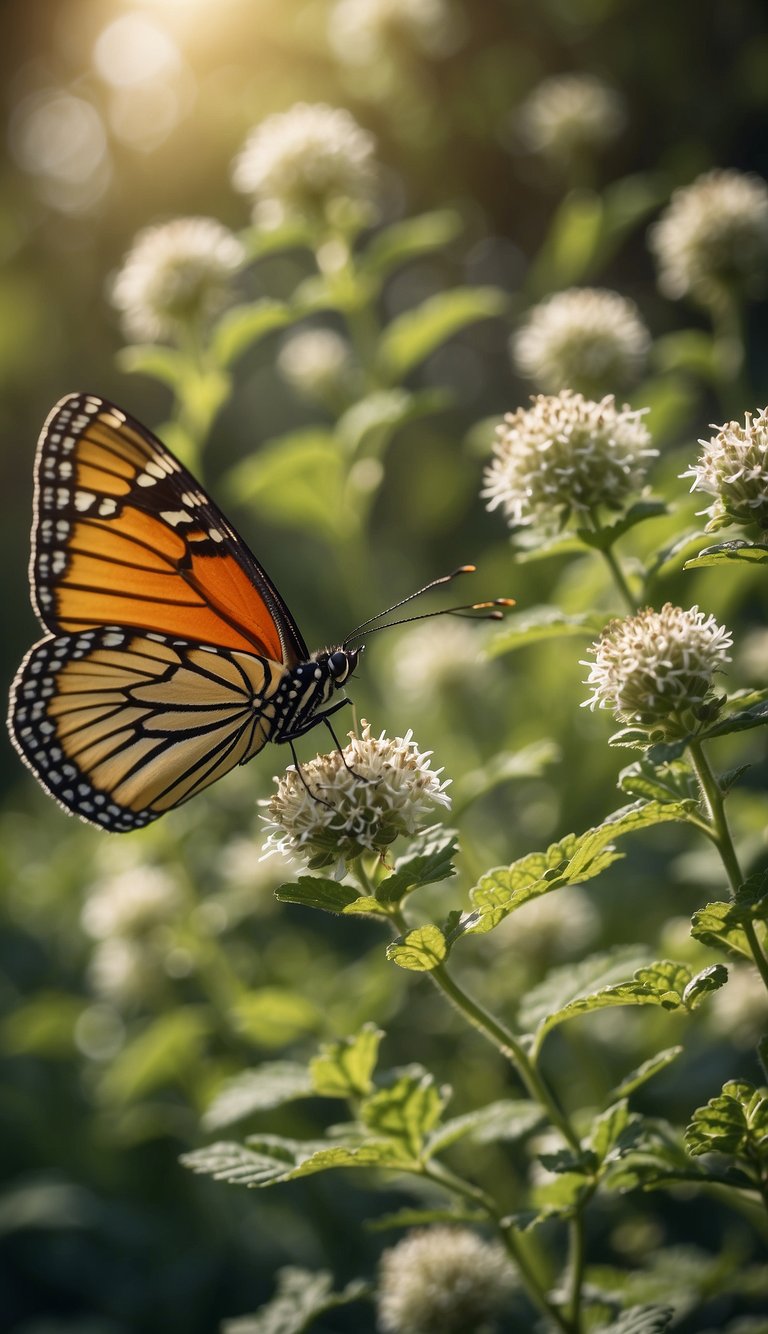

Catnip, known scientifically as Nepeta cataria, is a well-known plant loved by cats but hated by mosquitoes. This herb emits a chemical called nepetalactone, which makes it a natural insect repellent.
Apart from repelling mosquitoes, catnip’s small white flowers with purple dots attract butterflies. This makes it a dual-purpose plant for gardens.
Catnip grows vigorously, which can be beneficial for filling garden spaces quickly. Its square stem and gray-green leaves add visual interest to the garden. This plant thrives in a variety of soil types and requires minimal maintenance.
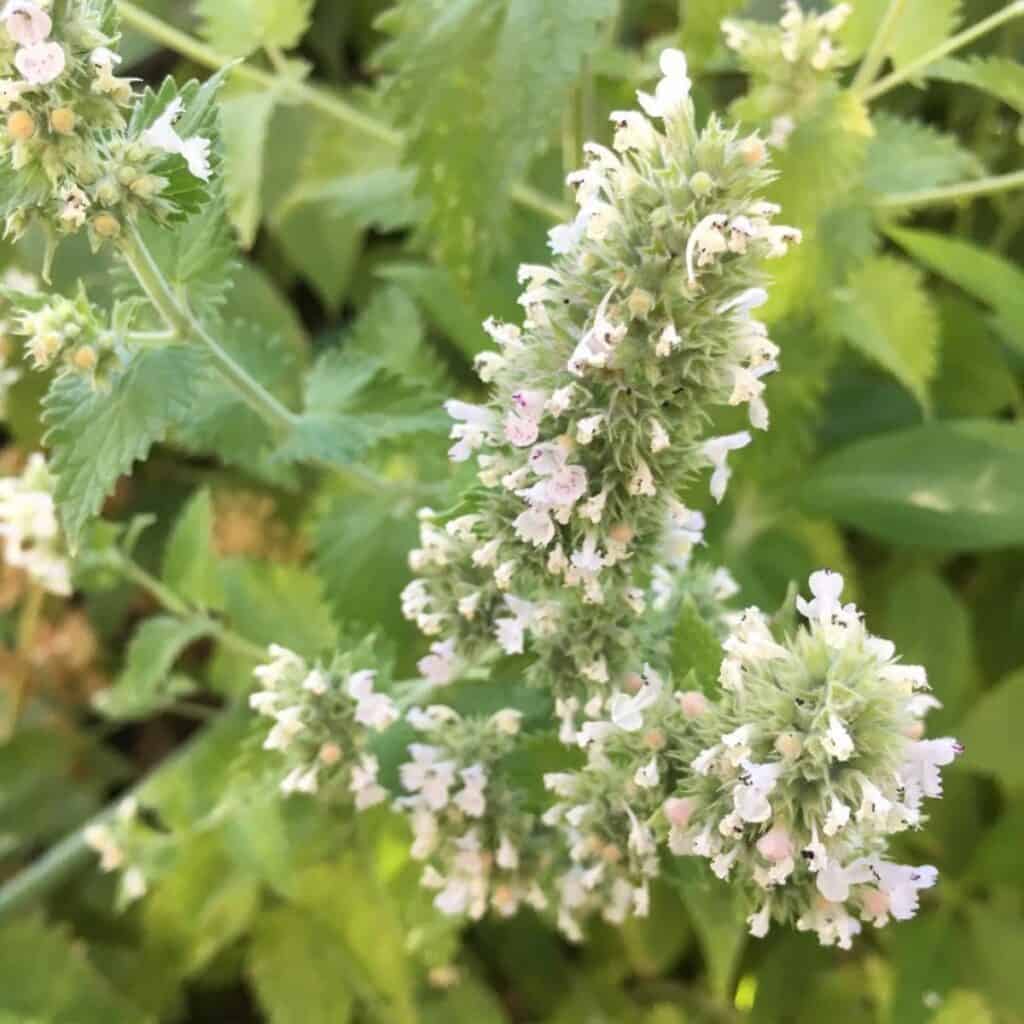

Plant catnip around outdoor seating areas or garden borders to maximize its mosquito-repelling properties. This placement ensures fewer mosquitoes in frequently used areas while enhancing the garden’s attractiveness to butterflies.
Catnip’s resilience and ease of growth make it an excellent addition to any garden seeking to balance beauty and functionality.
#6 – Mint
Mint is a versatile plant that mosquitoes hate. Its strong aroma is unpleasant to them, making it an effective repellent. This makes mint a great addition to any garden where mosquitoes are a problem.
Mint also attracts butterflies. The plant’s flowers appeal to these pollinators, offering them a source of nectar.
Besides its pest-repelling and butterfly-attracting qualities, mint is useful in the kitchen. It can be used in a variety of dishes, from savory to sweet.
Whether fresh or dried, mint adds a refreshing flavor to many recipes.
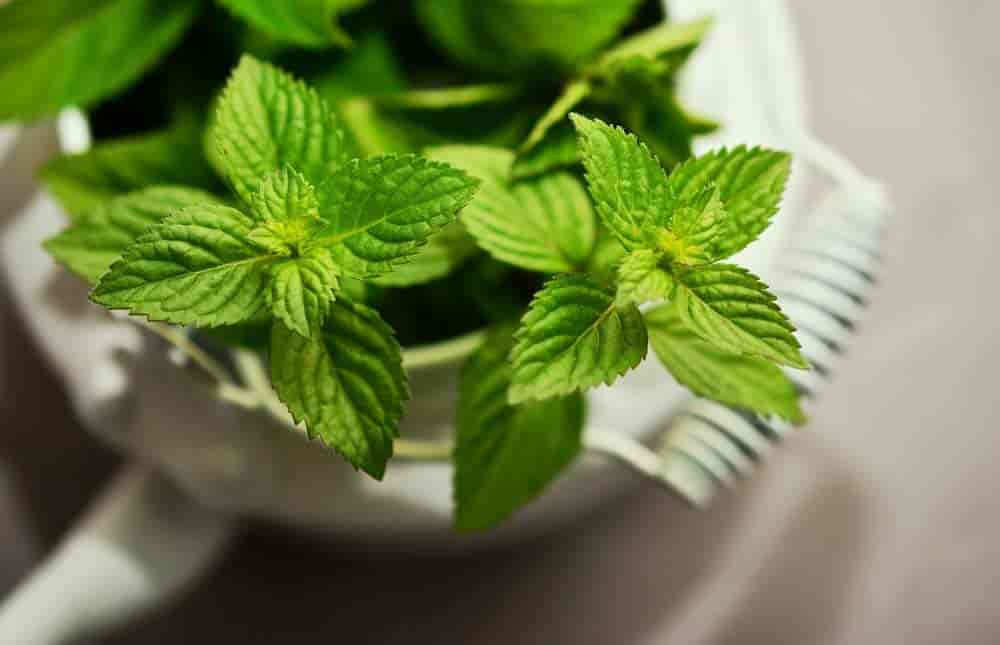

Mint grows well in most climates and can thrive in the ground or in containers. It’s important to keep it in check, though, as it can spread rapidly. It’s best planted in an area where it can be contained.
Adding mint to your garden provides multiple benefits. It’s easy to care for, helps keep mosquitoes away, and attracts butterflies, making it an excellent choice for gardeners.
#7 – Basil
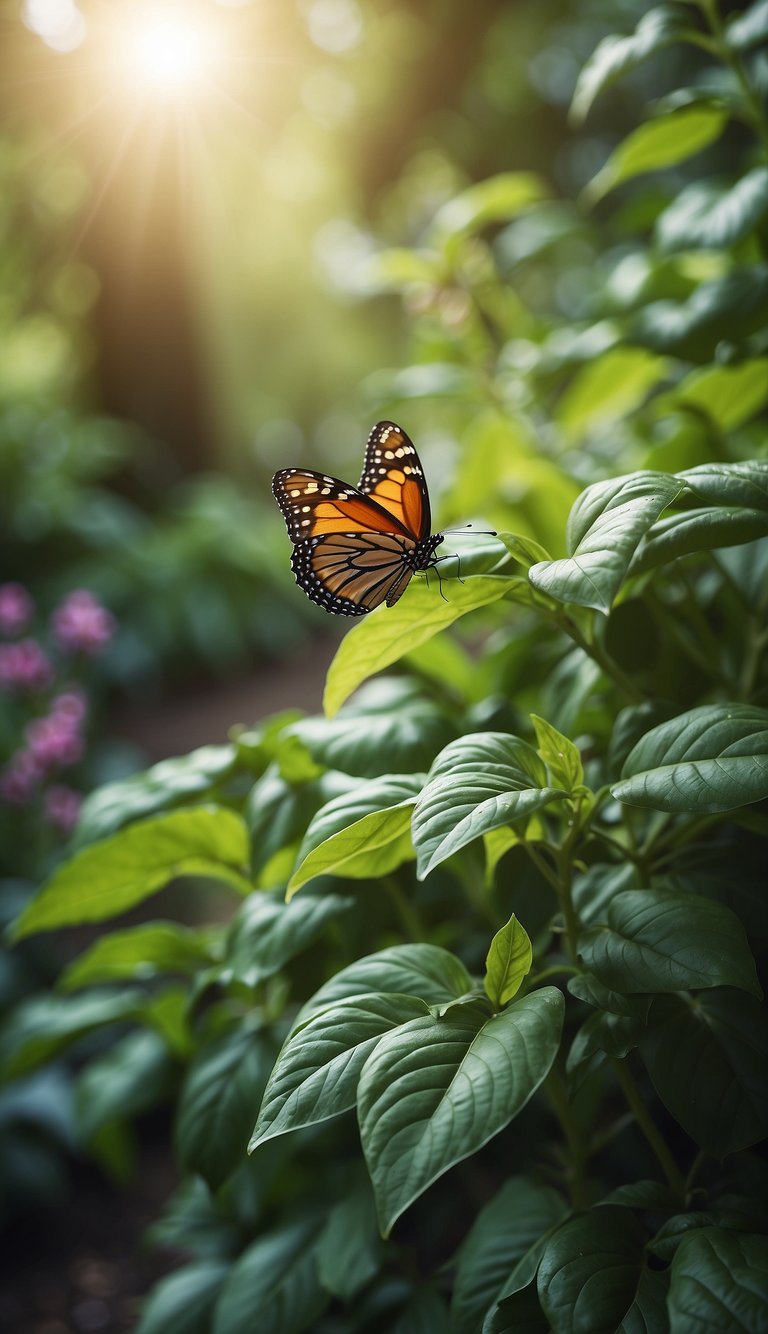

Basil is a well-known herb popular in many dishes due to its strong aroma and delightful flavor. Besides its culinary uses, basil also has properties that help keep mosquitoes away.
Basil’s pungent scent repels mosquitoes, making it an excellent addition to any garden aimed at reducing these pests. Its leaves emit this scent even without being crushed, offering continuous protection.
Butterflies, on the other hand, are attracted to basil’s small flowers. These blooms provide a nectar source for butterflies, making basil a dual-purpose plant.
This plant is easy to grow and can thrive in containers or garden beds. Regular pruning encourages bushier growth and more flowers, benefiting both butterfly visitors and keeping mosquitoes at bay.
An added benefit is that basil can be harvested regularly for cooking, offering fresh flavors to dishes while serving its insect-repelling function in the garden.
Basil’s ability to repel mosquitoes and attract butterflies makes it a valuable plant for any garden for both beauty and functionality.
#8 – Ageratum
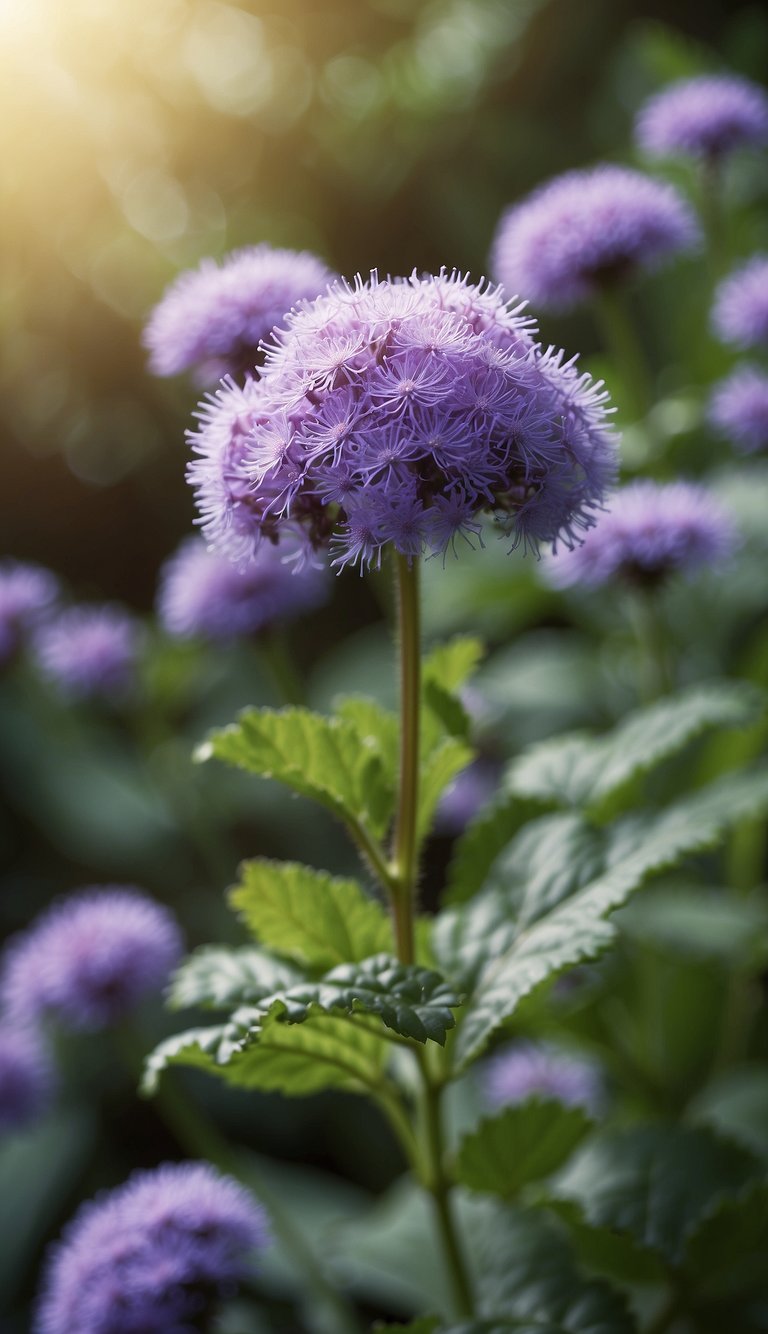

Ageratum, or floss flower, is a popular plant that mosquitoes dislike. Its leaves emit a strong scent that repels mosquitoes naturally.
This plant is easy to grow and maintain. It thrives in full sun and well-drained soil. They can be planted in garden beds or pots, making them versatile for various designs.
Ageratum produces clusters of small, fluffy flowers. These flowers attract butterflies with vibrant blue, pink, or white colors. The butterflies enjoy the nectar, making Ageratum a great choice for any garden.
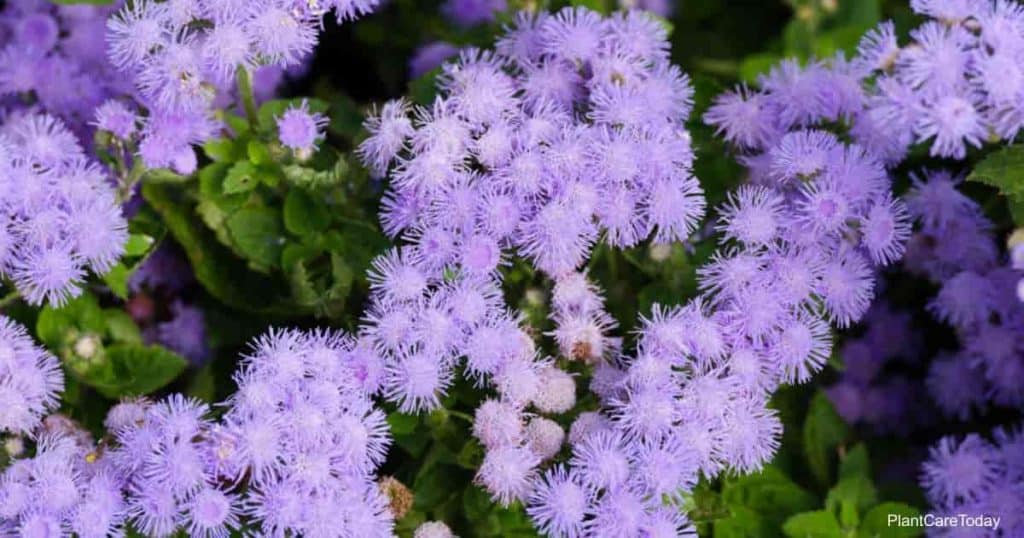

In addition to being mosquito-repellent, Ageratum is also non-toxic to pets. This makes it a safe option for households with cats and dogs.
#9 – Rosemary
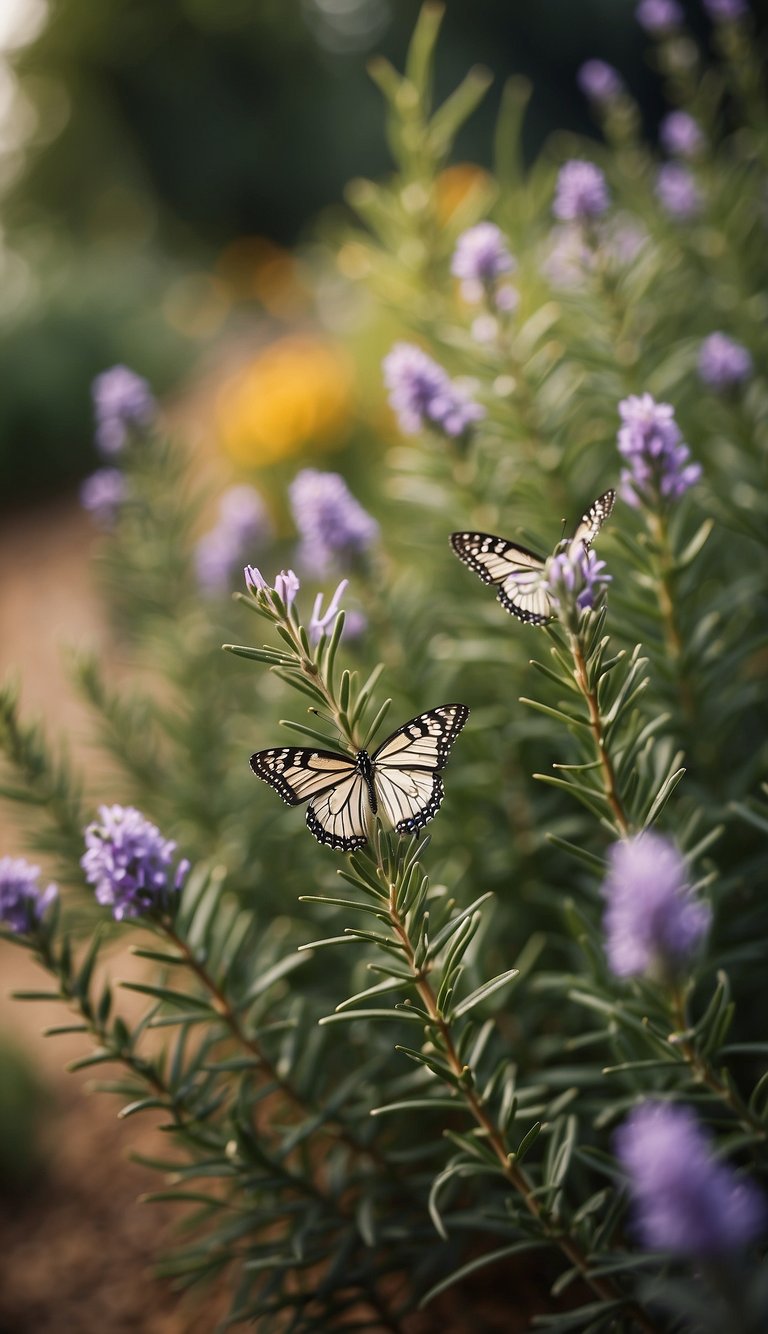

Rosemary is an excellent choice for a garden that aims to deter mosquitoes.
Its strong aroma is unpleasant to mosquitoes, helping to keep them away. This makes rosemary a natural repellent.
In addition to its mosquito-repelling abilities, rosemary is loved by butterflies.
The plant’s small, blue flowers provide nectar that attracts these pollinators. This dual benefit makes rosemary a valuable addition to any garden interested in both pest control and pollinator support.
Rosemary is easy to grow and can thrive in various conditions, including pots and garden beds.
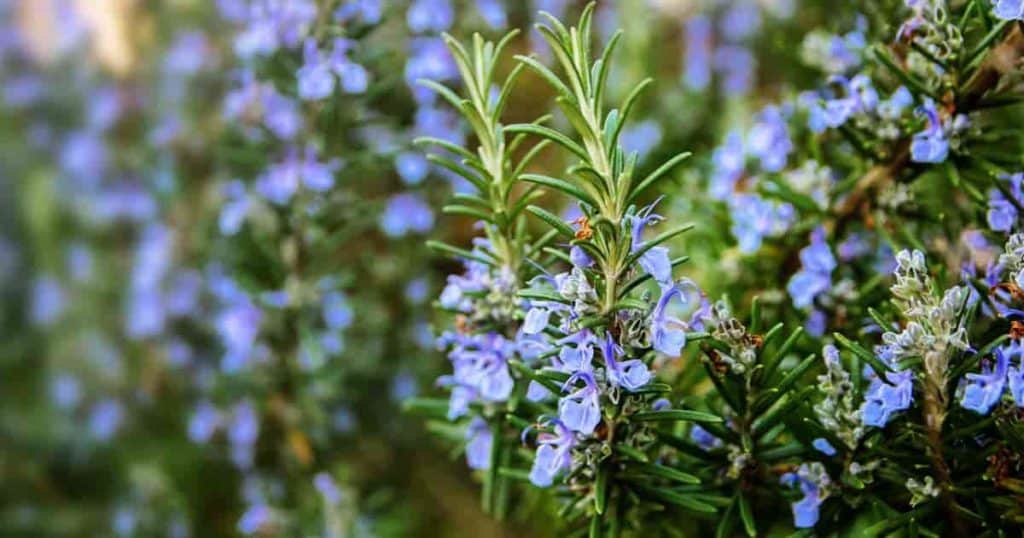

It prefers well-drained soil and full sun but can tolerate some shade. Regular pruning helps maintain its shape and encourages more growth.
Using rosemary involves more than just planting. Crushing the leaves releases essential oils that can be more effective in repelling mosquitoes.
This makes it versatile in different forms, such as homemade repellents.
#10 – Allium
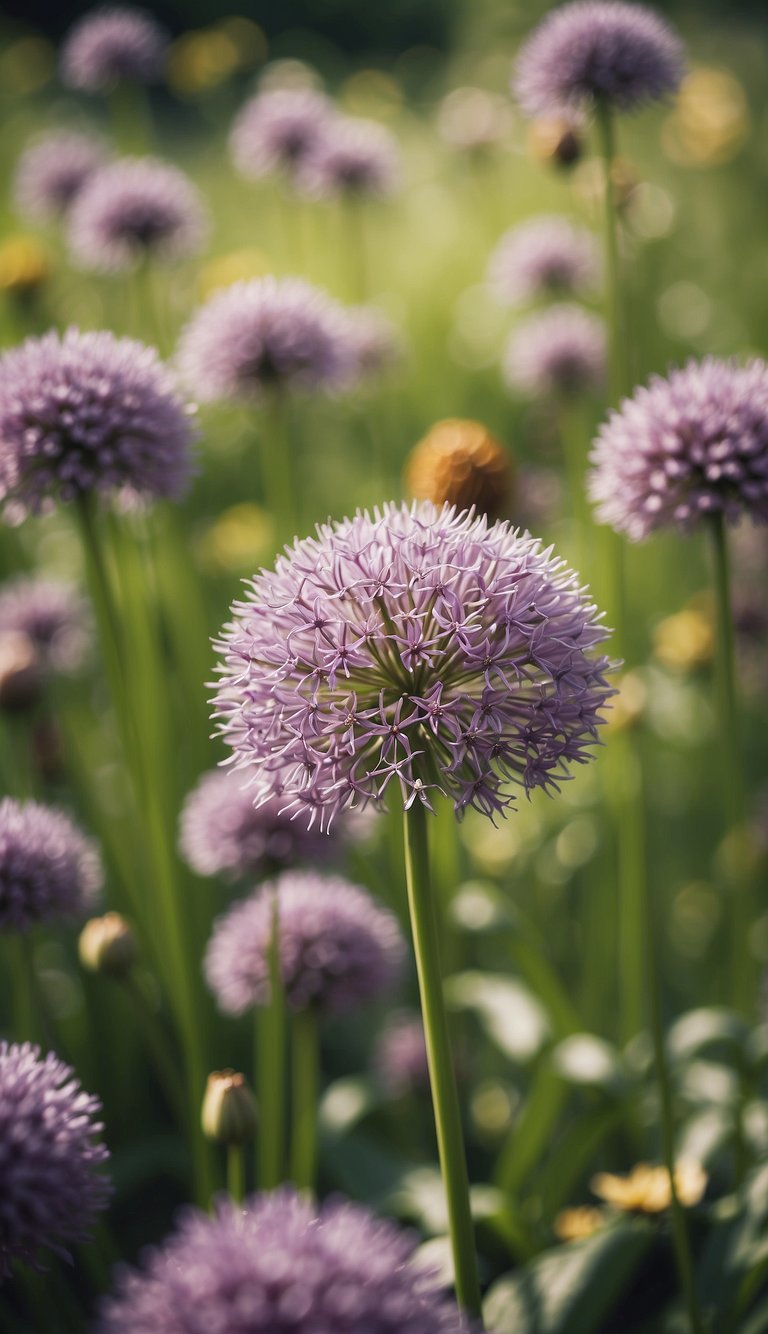

Allium, an onion family member, is not just useful in the kitchen.
Allium plants are known for their striking, round heads of small purple flowers. They stand tall on straight stalks, adding a unique touch to any garden.
Allium’s strong smell keeps mosquitoes away. This pest-repelling feature makes it a great choice for gardeners looking to protect their outdoor spaces from bugs.
Besides repelling pests, Allium attracts butterflies.
The vibrant flowers provide nectar, drawing these beautiful insects into the garden.
There are many varieties of Allium, including chives, onions, and garlic.
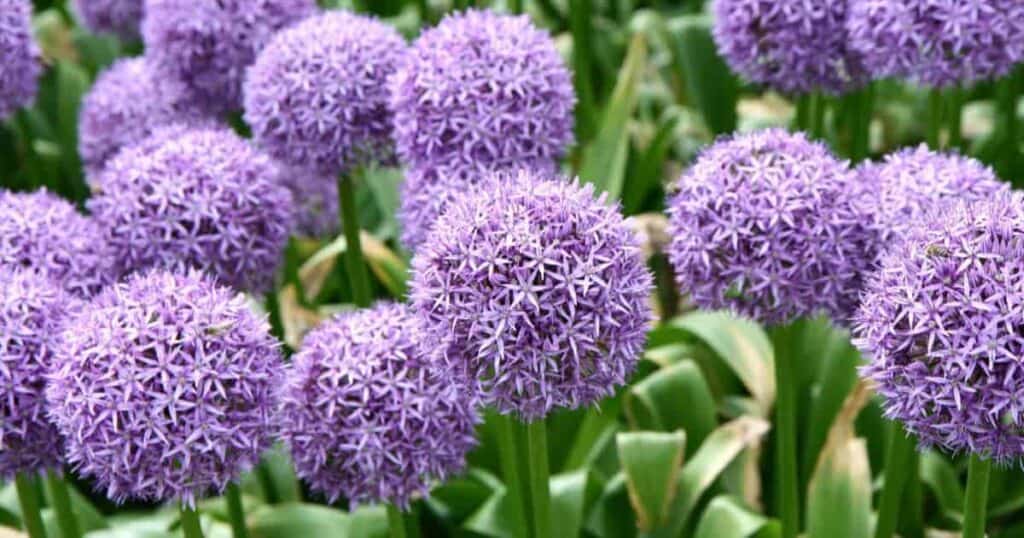

Each has a pungent odor that deters mosquitoes and other pests. This makes them a multifunctional addition to any garden.
Planting Allium along the edges of flower beds can create a natural barrier against mosquitoes.
They grow well in both full sun and partial shade, making them versatile for different garden settings.
Why Certain Plants Deter Mosquitoes
Certain plants deter mosquitoes because they emit natural oils that repel insects.
These oils interfere with the insects’ sensory receptors, making it hard for them to locate humans to bite.
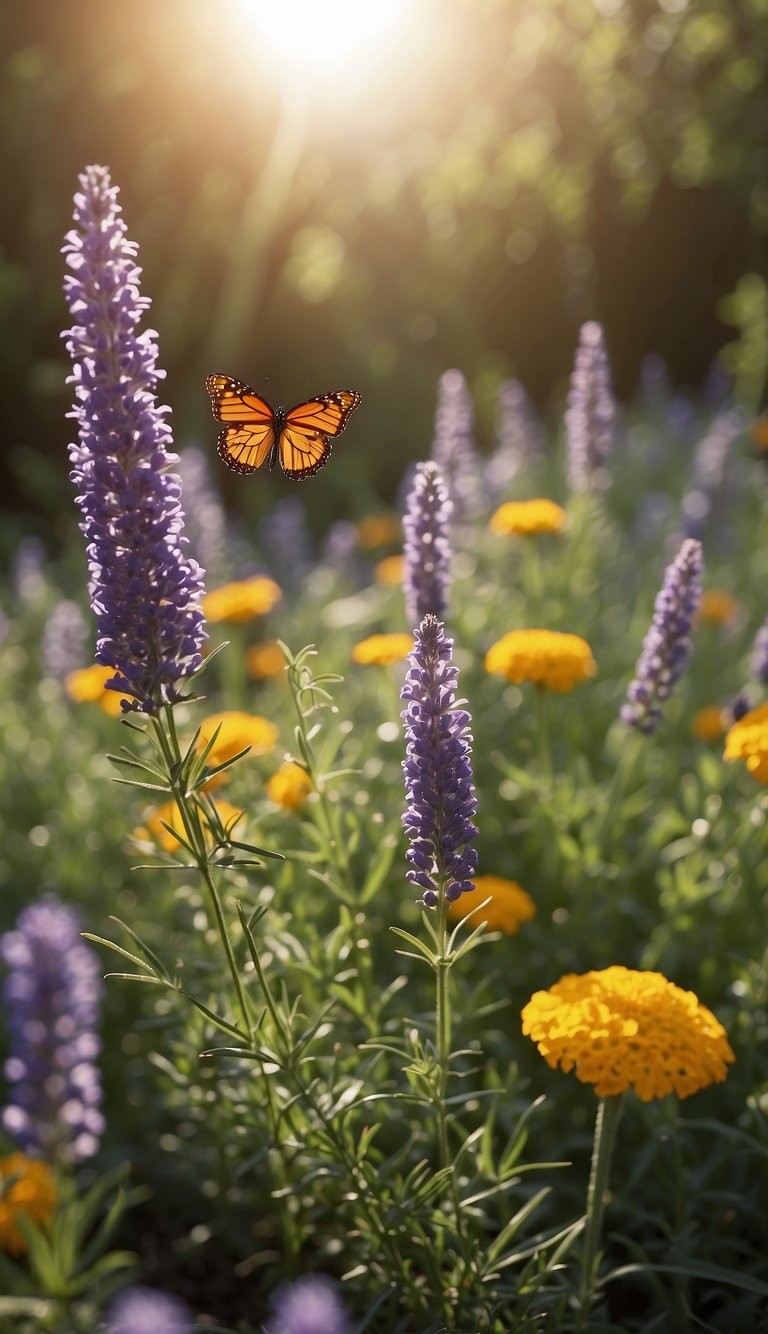

Understanding Mosquitoes’ Preferences
Mosquitoes are attracted to humans by specific signals.
They use their sense of smell to detect carbon dioxide, body odors, and other chemicals. When mosquitoes sense these signals, they can locate a person to bite.
Different plant oils mask these signals or create smells mosquitoes dislike, making it hard for them to find their target.
For example, catnip produces a chemical called nepetalactone, which is unpleasant to mosquitoes.
Similarly, citronella, found in lemongrass, has a strong smell that confuses mosquitoes and prevents them from locating humans.
How Plants’ Natural Oils Repel Insects
The oils in these plants are the key to repelling mosquitoes.
When the oil is released, crushing the leaves naturally interferes with the mosquito’s ability to track their prey.
Lavender, for instance, contains linalool and camphor, which effectively keep mosquitoes at bay.
Likewise, when stepped on or crushed, thyme emits oils, releasing compounds like thymol that repel mosquitoes.
Plants like these have developed these characteristics as a defense mechanism against pests, thereby keeping mosquitoes away from people nearby.
Creating A Butterfly-Friendly Garden
To create a garden that welcomes butterflies, it’s important to provide the right habitat, food sources, and care.
This includes essential factors such as sunlight and water, and specific plants that offer the nectar butterflies crave.
Essential Factors for Attracting Butterflies
Butterflies are drawn to gardens with plenty of sunlight and protection from strong winds.
Planting flowers in sunny spots is crucial, as butterflies prefer to feed and bask in the sun.
Water is also essential. A shallow dish with water and a few stones for perching can provide a drinking spot.
Pesticide use should be minimized to prevent harming the butterflies and their larvae.
Butterflies need places to lay eggs and plants for caterpillars to eat.
Including host plants, such as milkweed for monarchs, ensures that butterfly life cycles can thrive in the garden.
Protection from heavy winds can be achieved with taller plants or garden structures.
Nectar-Rich Plants
Choosing nectar-rich plants is key to attracting butterflies.
Brightly colored flowers like red, yellow, orange, pink, and purple appeal to them.
Lavender attracts both butterflies and repels mosquitoes. Its aromatic oil is beneficial in keeping pests away. Planting lavender near seating areas can enhance both beauty and function.


Passionflower vine supports the Gulf fritillary butterfly. Its striking flowers and ability to thrive in various conditions make it an excellent addition.
Clover provides nectar and is a host plant. Its trifoliate leaves nourish caterpillars, making it a valuable plant for sustaining butterfly populations.
Integrating Mosquito-Repelling And Butterfly-Attracting Plants
Planting mosquito-repelling plants that also attract butterflies can enhance your garden’s beauty and functionality.
Garden Layout and Plant Placement
To maximize the benefits, place mosquito-repelling plants in areas where people frequently gather.
For example, planting lavender around patios or seating areas helps keep mosquitoes at bay while inviting butterflies.
Plants like citronella can be used along pathways and borders to create natural barriers.
Group plants with similar sunlight and water requirements. This ensures they thrive together without over or under-watering.
For instance, mint thrives in moist soil and partial shade, perfect for garden edges.
Companion Planting Techniques
Companion planting involves pairing plants to enhance growth, repel pests, and attract beneficial insects.
Combining mosquito-repellent plants with butterfly attractors like lavender creates a balanced ecosystem.
Plant catnip near flowering species that butterflies love, such as coneflowers or asters.
This will help maintain a natural pest control system.
Interspersing strong-scented herbs like basil among flowers can also deter mosquitoes while providing nectar for butterflies.
This technique reduces the need for chemical pesticides, keeping the garden eco-friendly.




